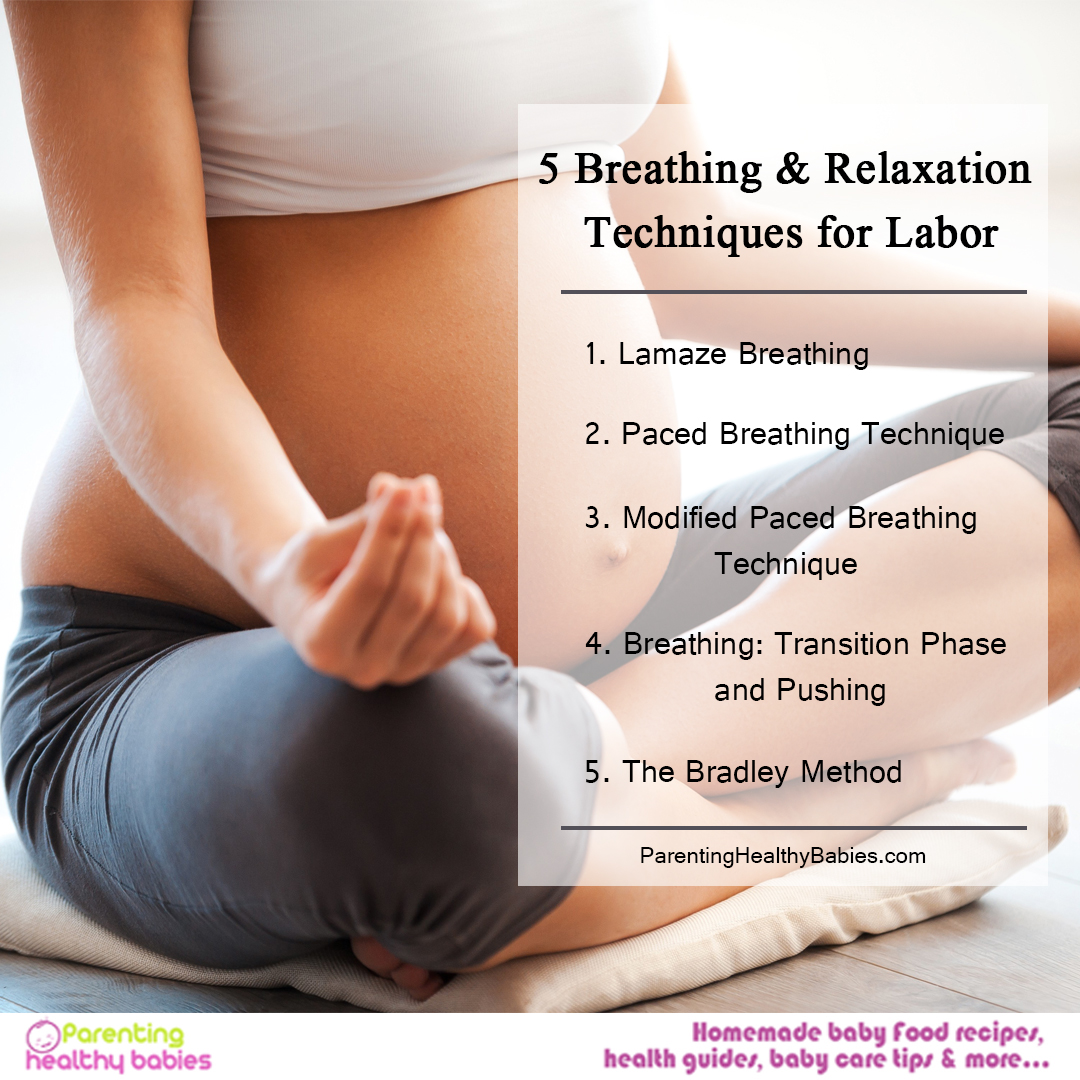
Relaxation techniques Some of the relaxation techniques that are used in research studies with laboring people that we havent covered yet include progressive muscle relaxation guided imagery and visualization. Breathing and RelaxationEveryone has a different pain tolerance and reacts to pain in a very personal way.

When tense breathing may be erratic or we may hold our breath.
Breathing and relaxation techniques for labor. Relaxation Techniques for Labor One of the best ways to relax during labor is to learn to isolate different muscle groups in your body. This breathing technique may be used during the second stage of labor during contractions. You exert a downward pressure on the diaphragm and abdominal cavity and therefore on the top of the uterus while you are holding your breath to help push the baby out.
Do not push while practicing Relaxation techniques. Breathing and relaxation techniques help women cope with the stress of labour. Its natural to go into a panic and fight the process.
Instead with patterned breathing it is possible to harmonise with the labour and make it easier while you remain in control of your body. Importance of Breathing and Relaxation Techniques in Labor. Breathing techniques are helpful to many women in labor.
The theory behind childbirth breathing patterns is based on the concentration required to focus on your breathing. During a contraction your thought process is redirected from a pain response such as tension and breath holding to a learned relaxed breathing response. Progressive relaxation techniques.
Begin by relaxing the muscles of your head and face. Release down the back or your neck across your shoulders and arm down your chest abdomen and back all the way down your legs to your toes. Breathe slowly releasing more.
Breathing patterns for the first stage of labor. Begin slow breathing when contractions are intense enough that you can no longer walk or talk through them without pausing. Use slow breathing for as long as you find it helpful.
Switch to another pattern if you become tense and can no longer relax during contractions. Work to keep your breathing and counts slow and steady. A partner can count with you if you find it helpful.
Use this breathing at any point during labor or any other stressful times. The slow and focused breathing can help you relax and slow your heart rate. Breathing often reflects our state of relaxation or excitation.
When at rest breathing is usually slow and rhythmic such as when asleep. When tense breathing may be erratic or we may hold our breath. Controlling breathing may help you become aware of your state so you can stay relaxed.
Breathing techniques are helpful to many women in labor. As you switch to light breathing during active labor step 5 above transition breathing can help control feelings of despair and exhaustion. Take an organizing breath.
Focus your attention on one. Breathing techniques Lamaze breathing techniques teach you to pattern your breathing to decrease the pain you feel. As each contraction begins you take a deep or cleansing breath.
Breathing is important to ensure relaxation in labor. Breathing techniques in the first stage of labor are designed to increase the size of the abdominal cavity to reduce friction. By the time labor has begun it is too late for instruction in breathing and relaxation.
Controlled breathing techniques are most difficult near the end of the second stage of labor. But with controlled breathing and relaxation techniques such as progressive muscle relaxation or specific yoga moves the labor process may be more comfortable. Certain techniques can reduce the degree of pain relax the muscles and help manage contractions and breathing giving you better control over your body 2.
Relaxation techniques Some of the relaxation techniques that are used in research studies with laboring people that we havent covered yet include progressive muscle relaxation guided imagery and visualization. Then we recently just talked about psychoprophylaxis in. Breathing and RelaxationEveryone has a different pain tolerance and reacts to pain in a very personal way.
Women should think about their goals for pain cont. After the cervix is dilated for more than 5 cm the contractions intensify and paced breathing techniques may not be enough to get you through it. Use the modified paced breathing technique for further contractions.
It is one of the good breathing and relaxation techniques for labor. You may practice this in the last month regularly. A deep cleansing breath can be helpful throughout your labor and delivery.
Its a deep exaggerated breath that is most often taken in through the nose and out through the mouth. Its also best if its a breath that originates from the abdomen rather than the chest.